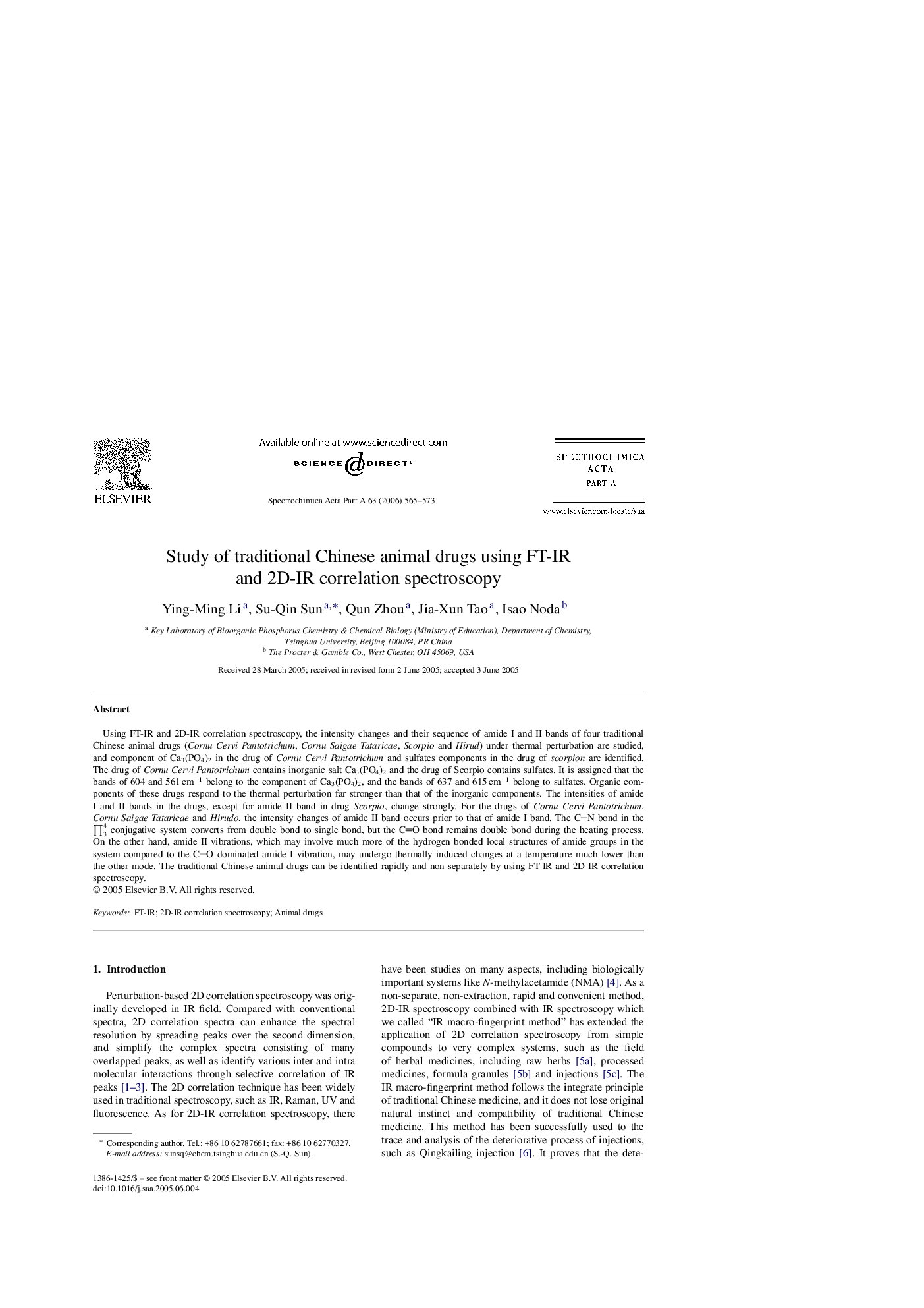| Article ID | Journal | Published Year | Pages | File Type |
|---|---|---|---|---|
| 1236785 | Spectrochimica Acta Part A: Molecular and Biomolecular Spectroscopy | 2006 | 9 Pages |
Using FT-IR and 2D-IR correlation spectroscopy, the intensity changes and their sequence of amide I and II bands of four traditional Chinese animal drugs (Cornu Cervi Pantotrichum, Cornu Saigae Tataricae, Scorpio and Hirud) under thermal perturbation are studied, and component of Ca3(PO4)2 in the drug of Cornu Cervi Pantotrichum and sulfates components in the drug of scorpion are identified. The drug of Cornu Cervi Pantotrichum contains inorganic salt Ca3(PO4)2 and the drug of Scorpio contains sulfates. It is assigned that the bands of 604 and 561 cm−1 belong to the component of Ca3(PO4)2, and the bands of 637 and 615 cm−1 belong to sulfates. Organic components of these drugs respond to the thermal perturbation far stronger than that of the inorganic components. The intensities of amide I and II bands in the drugs, except for amide II band in drug Scorpio, change strongly. For the drugs of Cornu Cervi Pantotrichum, Cornu Saigae Tataricae and Hirudo, the intensity changes of amide II band occurs prior to that of amide I band. The CN bond in the ∏34 conjugative system converts from double bond to single bond, but the CO bond remains double bond during the heating process. On the other hand, amide II vibrations, which may involve much more of the hydrogen bonded local structures of amide groups in the system compared to the CO dominated amide I vibration, may undergo thermally induced changes at a temperature much lower than the other mode. The traditional Chinese animal drugs can be identified rapidly and non-separately by using FT-IR and 2D-IR correlation spectroscopy.
